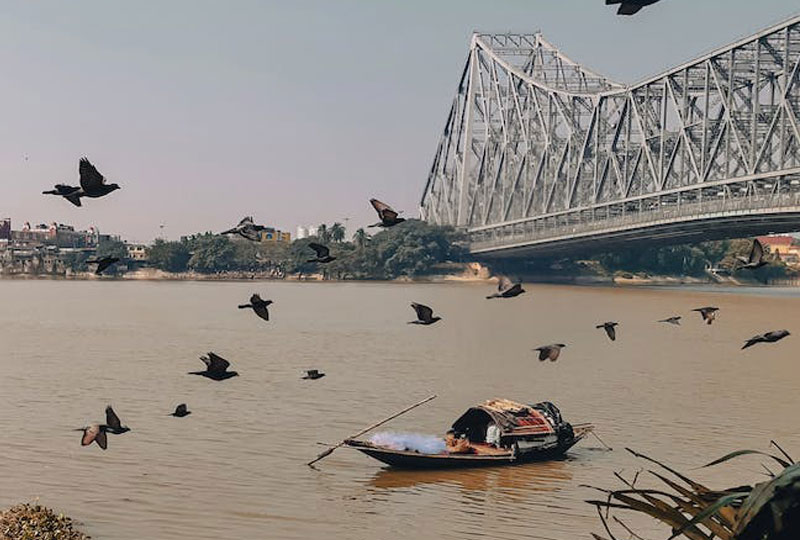Howrah Bridge
Howrah Bridge
The first Howrah Bridge, set up by Sir Bradford Leslie in 1874, was a floating pontoon bridge linking Howrah and Calcutta. It is indeed fascinating to know that the idea of bridging the Hooghly was conceived by the Bengal Government in 1862 and it took 12 years thereafter for the first bridge to be built and opened to use. In the intervening years, other attempts were made to draw up a feasible plan for bridging the river but none of them came to fruition. The Calcutta Port Trust was founded in 1870 to manage the construction and finally, the contract was signed with Sir Leslie. The structure was not built in India, parts were constructed in England and assembled in Calcutta, a process which was cumbersome and took time. It was finally opened to traffic in October 1874.

In the year 1905, the Port Commissioners started thinking about an alternative, new bridge since the daily traffic on the pontoon bridge was proving to be quite difficult to handle. In 1906, tenders were invited for a floating bridge. After some hiccups in the process, in 1922, the Mukherjee Committee (headed by Sir R.N. Mukherjee) submitted its report to the New Howrah Bridge Commission. The New Howrah Bridge Act passed in 1926, was finally amended in 1935 to specify that the contract for construction was given to Braithwaite Burn and Jessup Construction Company Limited and work started the next year. The designers of the bridge were M/s Rendel, Palmer and Tritton.
The new bridge was completed in 1942 and opened to traffic in February 1943. Interestingly, it was a solitary tram that first crossed the new Howrah Bridge.
Imagine a bridge with no nuts or bolts but held together solely by means of rivets and made out of 26,500 tonnes of steel – a major part of it supplied by Tata Steel and named Tiscom. There are many anecdotes about the difficulties faced during the construction but finally, it was ready. The government did not have any formal inauguration of the bridge due to threats of Japanese aircraft which were on antagonistic terms with Allied forces.
The bridge was renamed Rabindra Setu in 1965, after renowned poet and Nobel laureate Rabindranath Tagore. It has been established that the daily traffic on the bridge comprises of about 1.5 lakh pedestrians and 1 lakh vehicles. Keeping this in mind, the need was eventually felt to have a secondary bridge in order to handle these massive numbers and reduce the stress on the main bridge. Hence the Second Hoogly Bridge, named the Vidya Sagar Setu (after the country’s great educationist-reformer and freedom fighter Shri Ishwar Chandra Vidyasagar) was opened in 1992. It was the longest cable-stayed bridge in India.